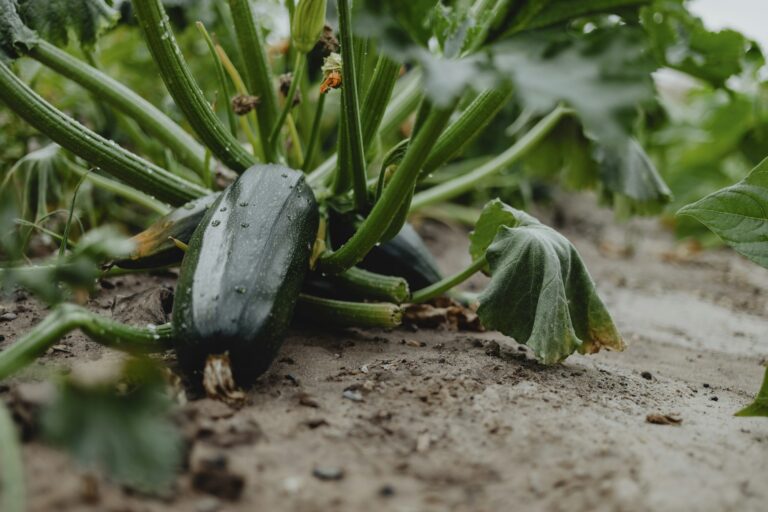Troubleshooting Yellow Leaves on Pothos Plants

Are you the proud owner of a beautiful pothos plant that is suddenly showing signs of distress with yellowing leaves? Don’t panic! While some varieties of pothos have yellow markings on their leaves as part of their natural coloration, yellowing leaves can be a sign of an underlying issue that needs to be addressed.
In this comprehensive guide, we will delve into the various reasons why your pothos leaves might be turning yellow, what you can do to remedy the situation, and how to prevent it from happening in the future. Let’s get to the root of the problem!
Understanding Yellowing Leaves on Pothos
Pothos plants are renowned for their resilience and ability to thrive in indoor environments. It’s rare to see them suffering from ailments, but when yellowing leaves crop up, it’s essential to take action. Here are the common causes of yellow leaves on pothos plants:
1. Root Rot
Overwatering your pothos or planting it in soil that doesn’t drain properly can lead to root rot. When the roots are suffocated due to oversaturation, they become vulnerable to infections. Pythium root rot, caused by water molds, is a common issue that can turn the roots mushy and lead to yellowing leaves.
- Signs of root rot include discolored leaves, particularly on younger growth.
- If detected, it’s crucial to act promptly to prevent further damage.
2. Salty Soil
Excessive fertilization can cause a salt buildup in the soil, damaging the roots’ ability to absorb water. This can result in burnt leaf edges and yellowing foliage.
- Flushing excess fertilizer from the soil can help alleviate the issue.
- Repotting in fresh, sterile soil may be necessary if the damage is severe.
3. Sunlight
While pothos plants can tolerate low light conditions, too much direct sunlight can cause leaves to turn a scrambled egg color. Moving the plant to a location with ample indirect light can help resolve this problem.
- Affected leaves may not return to their original shade after relocation.
- Pruning away discolored leaves can enhance the plant’s appearance.
4. Natural Aging Process
Occasionally, mature leaves may turn yellow as part of the natural growth cycle. This is typically not a cause for concern, as it signifies the plant making room for new growth.
- If only a few mature leaves exhibit yellowing, it’s likely part of the plant’s lifecycle.
- Removing these leaves can promote healthy growth and rejuvenation.
5. Compacted Roots
When roots become bound and overcrowded in the pot, the plant may exhibit symptoms of stress, such as yellowing leaves. Repotting in a larger container with proper drainage can help revive the plant.
- Container-bound roots can impede nutrient absorption and lead to discoloration.
- Careful root untangling and repotting can restore the plant’s vitality.
6. Underwatering
While pothos plants are resilient to underwatering, prolonged dryness can cause leaves to turn butter-colored and appear dehydrated. Thoroughly watering the soil and maintaining consistent moisture levels is essential for plant health.
- Deep watering followed by proper drainage can revive dehydrated plants.
- Trimming away yellowed foliage after recovery can improve the plant’s appearance.
7. Bacterial Leaf Spot
Bacterial leaf spot causes water spots surrounded by yellow halos on the leaves. This condition is typically the result of environmental stressors and can lead to irreparable damage.
- Prevention is key to avoiding bacterial leaf spot.
- Implementing proper care practices can safeguard the plant from bacterial infections.
Preventive Measures for Healthy Pothos Plants
Maintaining a healthy environment for your pothos plant is essential to prevent yellowing leaves and promote long-term vitality. Here are some preventive measures to ensure your plant thrives:
- Use a sterile, porous potting mix during transplantation to prevent root rot.
- Repot your plant every 1.5 to 2 years to prevent root-bound conditions.
- Sanitize pots and containers to prevent the spread of pathogens.
- Ensure proper drainage to prevent waterlogging and salt buildup.
- Moderate fertilization to avoid excessive salt accumulation.
- Provide adequate light exposure without direct sunlight to prevent leaf damage.
- Avoid high humidity and temperature fluctuations to promote plant health.
- Water at the soil surface to prevent bacterial infections.
- Trim away yellowed leaves to improve the plant’s appearance.
By implementing these preventive measures, you can create an optimal environment for your pothos plant to thrive and minimize the risk of yellowing leaves.
Conclusion
Yellowing leaves on your pothos plant can be alarming, but with proper care and attention, you can address the underlying causes and restore your plant to health. From root rot to environmental stressors, understanding the reasons behind discoloration is essential for effective treatment.
Don’t let yellow leaves dampen your gardening spirits! By following the preventive measures outlined in this guide, you can create a nurturing environment for your pothos plant to flourish and enjoy vibrant, green foliage.
Have you experienced yellowing leaves on your pothos plant? Share your insights and experiences in the comments below! Let’s continue the conversation and help fellow plant enthusiasts troubleshoot their pothos leaf issues.
If you found this guide helpful and are looking to expand your indoor plant collection, check out our other easy-care houseplant guides for more gardening inspiration. Happy gardening!
In conclusion, properly caring for your pothos plants is essential to maintaining their health and vibrancy. By addressing the root causes of yellowing leaves and implementing preventive measures, you can ensure that your pothos plants thrive and continue to bring beauty to your indoor space. Stay tuned for more insightful plant care guides and tips to enhance your gardening experience!





